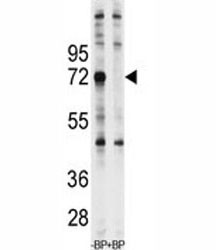Cookie preferences
This website uses cookies, which are necessary for the technical operation of the website and are always set. Other cookies, which increase the comfort when using this website, are used for direct advertising or to facilitate interaction with other websites and social networks, are only set with your consent.
Configuration
Technically required
These cookies are necessary for the basic functions of the shop.
"Allow all cookies" cookie
"Decline all cookies" cookie
CSRF token
Cookie preferences
Currency change
Customer-specific caching
FACT-Finder tracking
Individual prices
Selected shop
Session
Comfort functions
These cookies are used to make the shopping experience even more appealing, for example for the recognition of the visitor.
Note
Show the facebook fanpage in the right blod sidebar
Statistics & Tracking
Affiliate program
Conversion and usertracking via Google Tag Manager
Track device being used

| Item number | Size | Datasheet | Manual | SDS | Delivery time | Quantity | Price |
|---|---|---|---|---|---|---|---|
| NSJ-F40117-0.08ML | 80 µl | - | - |
3 - 10 business days* |
326.00€
|
||
| NSJ-F40117-0.4ML | 400 µl | - | - |
3 - 10 business days* |
702.00€
|
If you have any questions, please use our Contact Form.
You can also order by e-mail: info@biomol.com
Larger quantity required? Request bulk
You can also order by e-mail: info@biomol.com
Larger quantity required? Request bulk
In 1X PBS, pH 7.4, with 0.09% sodium azide. Ubiquilin 1 (UBQLN1), also known as DA41, was... more
Product information "Anti-Ubiquilin1"
In 1X PBS, pH 7.4, with 0.09% sodium azide. Ubiquilin 1 (UBQLN1), also known as DA41, was isolated from an adult rat lung cDNA library, and encodes a cellular protein that associates with DAN.1 DAN expression is reduced in rat fibroblast 3Y1 cells transformed with mouse sarcoma virus and in rodent fibroblasts transformed with a variety of oncogenes. The DAN-DA41 interaction is mediated through the N-terminal domain and a cysteine-knot region of DAN. Human DA41 encodes a 589-amino acid protein with 86% amino acid sequence identity with rat protein.2 DA41 expression is regulated in a cell cycle-dependent manner. PLIC1 and PLIC2 (UBQLN2) are homologs of the mouse Plics (proteins linking integrin-associated protein (IAP) and cytoskeleton) and the yeast Dsk2 protein. PLIC1, also called UBQLN1, shares 72% amino acid identity with PLIC2,3 Two motifs are conserved in the mammalian PLICs and yeast Dsk2, an N-terminal ubiquitin-like (UBL) domain and a C-terminal ubiquitin-associated (UBA) domain. Unlike ubiquitin, the UBL domain of the PLICs does not have a diglycine motif in its C terminus. The UBA domain is present in multiple enzyme classes of the ubiquitination machinery. Human PLICs associate with both proteasomes and ubiquitin ligases in large complexes. Overexpression of PLICs impairs the in vivo degradation of 2 unrelated ubiquitin-dependent proteasome substrates, p53 and I-kappa-B-alpha (NFKBIA), but not a ubiquitin-independent substrate. PLICs may link the ubiquitination machinery to the proteasome to affect in vivo protein degradation. The DA41 gene maps to chromosome 9q21.2-q21.3, a position overlapping a candidate tumor suppressor locus for bladder cancer.2 Protein function: Plays an important role in the regulation of different protein degradation mechanisms and pathways including ubiquitin- proteasome system (UPS), autophagy and endoplasmic reticulum- associated protein degradation (ERAD) pathway. Mediates the proteasomal targeting of misfolded or accumulated proteins for degradation by binding (via UBA domain) to their polyubiquitin chains and by interacting (via ubiquitin-like domain) with the subunits of the proteasome (PubMed:15147878). Plays a role in the ERAD pathway via its interaction with ER-localized proteins UBXN4, VCP and HERPUD1 and may form a link between the polyubiquitinated ERAD substrates and the proteasome (PubMed:19822669, PubMed:18307982). Isoform 1, isoform 2 and isoform 3 play a role in unfolded protein response (UPR) by attenuating the induction of UPR-inducible genes, DDTI3/CHOP, HSPA5 and PDIA2 during ER stress (PubMed:18953672). Involved in the regulation of macroautophagy and autophagosome formation, required for maturation of autophagy- related protein LC3 from the cytosolic form LC3-I to the membrane- bound form LC3-II and may assist in the maturation of autophagosomes to autolysosomes by mediating autophagosome- lysosome fusion (PubMed:19148225, PubMed:20529957, PubMed:23459205). Negatively regulates the TICAM1/TRIF-dependent toll-like receptor signaling pathway by decreasing the abundance of TICAM1 via the autophagic pathway (PubMed:21695056). Isoform 1 and isoform 3 play a key role in the regulation of the levels of PSEN1 by targeting its accumulation to aggresomes which may then be removed from cells by autophagocytosis (PubMed:21143716). Promotes the ubiquitination and lysosomal degradation of ORAI1, consequently downregulating the ORAI1-mediated Ca2+ mobilization (PubMed:23307288). Suppresses the maturation and proteasomal degradation of amyloid beta A4 protein (A4) by stimulating the lysine 63 (K63)-linked polyubiquitination. Delays the maturation of A4 by sequestering it in the Golgi apparatus and preventing its transport to the cell surface for subsequent processing. [The UniProt Consortium]
| Keywords: | Anti-DA41, Anti-PLIC-1, Anti-UBQLN1, Anti-hPLIC-1, Anti-Ubiquilin-1, Anti-Protein linking IAP with cytoskeleton 1, Ubiquilin1 Antibody |
| Supplier: | NSJ Bioreagents |
| Supplier-Nr: | F40117 |
Properties
| Application: | WB, ELISA |
| Antibody Type: | Polyclonal |
| Conjugate: | No |
| Host: | Rabbit |
| Species reactivity: | human, mouse |
| Immunogen: | A portion of amino acids 40-70 from the human protein was used as the immunogen for this Ubiquilin1 antibody. |
| Format: | Purified |
Database Information
| KEGG ID : | K04523 | Matching products |
| UniProt ID : | Q9UMX0 | Matching products |
| Gene ID | GeneID 29979 | Matching products |
Handling & Safety
| Storage: | -20°C |
| Shipping: | +4°C (International: +4°C) |
Caution
Our products are for laboratory research use only: Not for administration to humans!
Our products are for laboratory research use only: Not for administration to humans!
Information about the product reference will follow.
more
You will get a certificate here
Viewed



